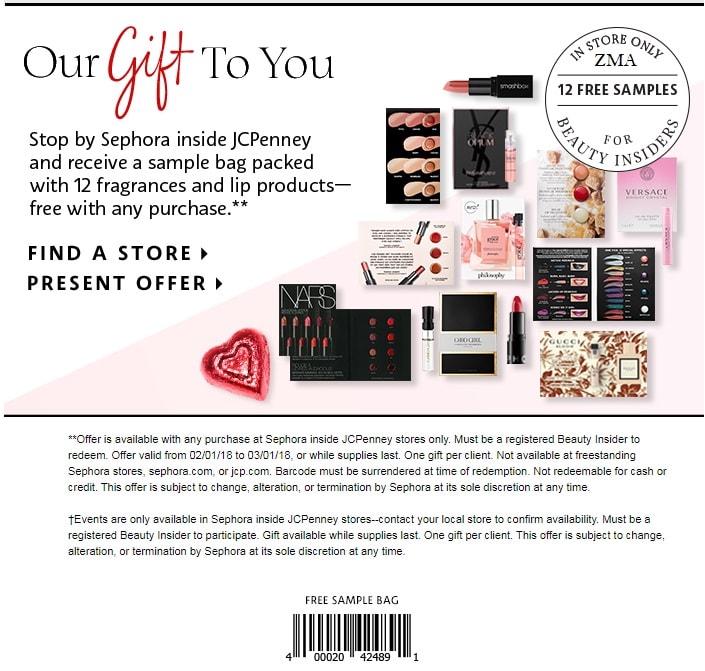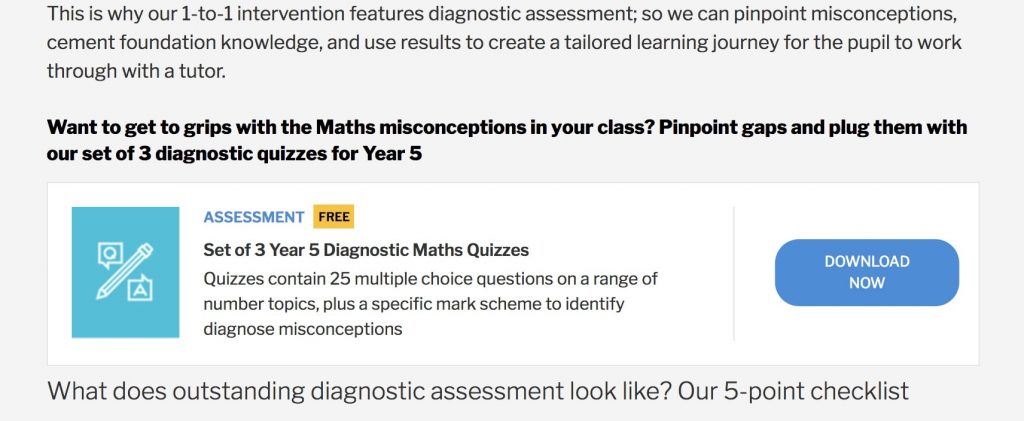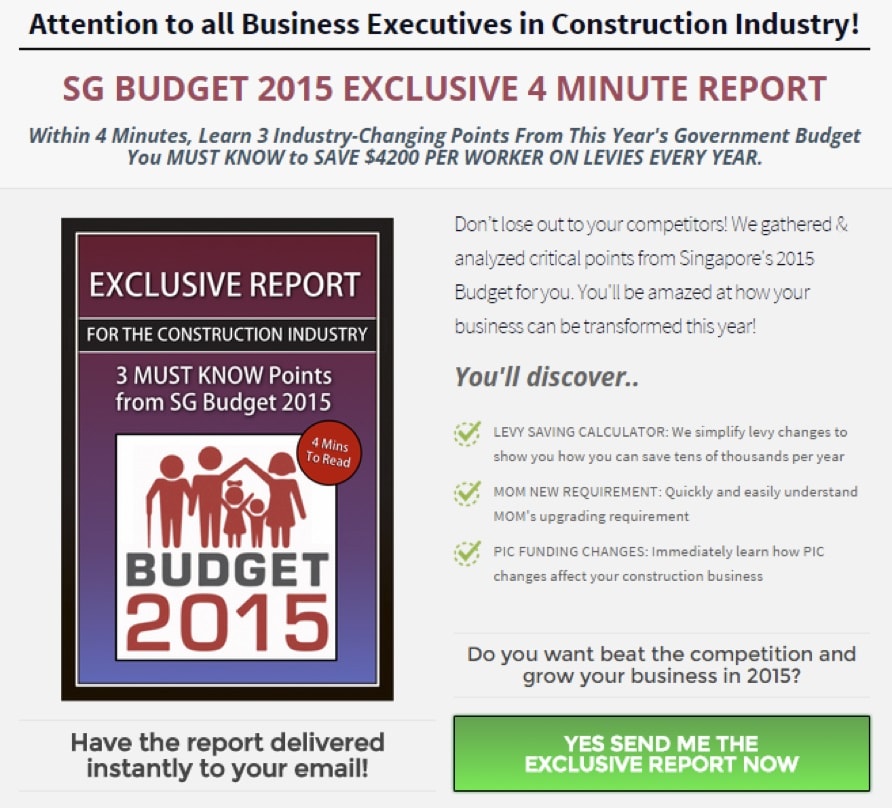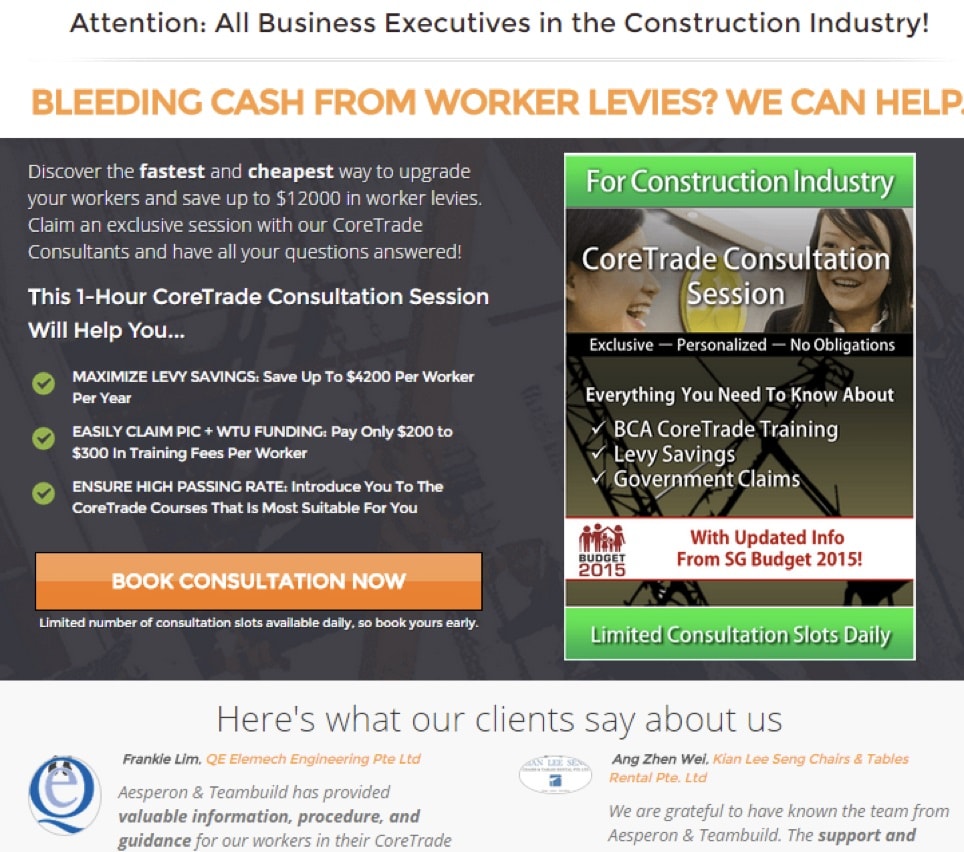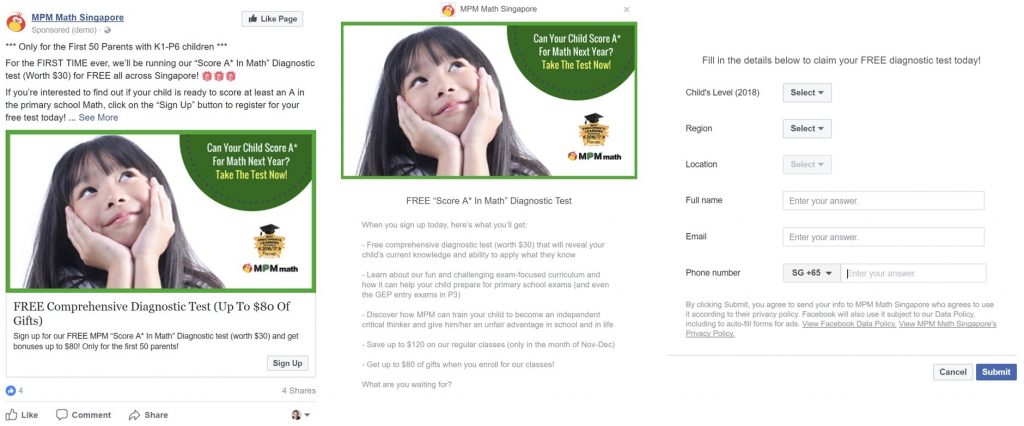How To Create Lead Magnets That Gets You Highly Qualified Leads
What Is A Lead Magnet?
A lead magnet is a free offer you give to your ideal customer in exchange for their contact details (usually their name and email address).
Here’s an example of a highly effective lead magnet used on the Women’s Health website.
When a website visitor enters their email in the box below, they will receive a 21-day bikini body plan in their email.
At the same time, it gives Women’s Health an opportunity to promote their magazine subscription and books to you.

Why Use A Lead Magnet?
A lead magnet is one of the best ways for you to build a list of warm audience who trust you and are more likely to purchase your product/services in the near future.
By providing massive value for prospective customers at little or no charge, you’re able build trust and credibility in your industry very quickly.
One of the often-overlooked function of a lead magnet is to attract the right leads for your business. Often, business owners use poor lead magnets that have little to do with their core offer.
Here’s an example.
A few years back, a financial advisory gave away movie tickets to “Fast & Furious 6” to generate leads for their team.
Unfortunately, many of the leads were not qualified and the advisors wasted days calling and following up with leads that had little or no interest in getting personal financial advice.
What Makes A Great Lead Magnet?
There are 7 key characteristics of irresistible lead magnets.
As we go through the exercises in this blueprint, make sure the lead magnets you create possess most (if possible all) these characteristics.
Makes Your Prospect Go “Wow!”
A good lead magnet MUST provide high perceived and actual value to your target audience. Your prospective customers must be impressed and even captivated by the value you’re providing for free.
Solves Your Ideal Customers’ Biggest Problems And Challenges
Your lead magnet must address the most urgent and immediate problems and challenges that are stopping them from taking action on your offer. Usually, it gives them a quick fix they can use immediately to get results.
Significantly Different From Your Competitors
You must make sure your offer is different from your prospect.
Before you start creating your first lead magnet, I recommend you check out your closest competitors and see what they’re offering to your market.
Prove To Your Customers That You’re Superior To Your Competitors
One of the most important functions of a good lead magnet is to educate your customer on your uniqueness and differentiation.
You need to show and explain to your prospective customers on why you’re the only logical choice in the market.
Gets You One Step Closer To The Sale
The lead magnet must facilitate and support the prospective customer to eventually make a decision to purchase your product or service.
This can be done through different ways – educating the prospective customer on their problems, addressing their objections and/or highlighting the benefits of your product or service.
In the later part of the blueprint, we’ll take you through a step-by-step process to create a lead magnet that moves the prospect closer to the sale.
Minimum Work & Effort From Your Ideal Customer
As best as possible, try to provide “quick fix” solutions to your prospective customer’s problem.
Remember, your lead magnet should not solve all their problems. At best, it is to show them what’s possible when they use your products and services.
Fast Consumption (Optional)
Your prospect needs to actually consume and use the lead magnet before they decide that they can trust you and buy from you.
If possible, try to create a lead magnet that can be consumed in 5 minutes or less.
This is why it doesn’t always make sense to give away a huge amount of content that will take the prospect days to consume.
Neither does it always make sense to give them a mini-course because they are likely to lose interest halfway in your sequence.
Now that we covered all 7 characteristics of great lead magnets, I’m going to share some examples of lead magnets and when you should use them.
Examples Of Lead Magnets
Quick Tips
Quick tips are short action steps that your prospective customer can take to help them solve a challenge that they are currently facing.
They usually come in the form of bullets that are easy to consume and require little to no effort on their part to get results.
For example, in this campaign we did for a wedding photographer, we created a short checklist of 15 questions to help young couples decide on a wedding photo package. Through this campaign, we were able to get qualified for as low as $1 per lead.
Free Sample
A free sample is a small quantity of a product that your prospective customer can try out first before they purchase the main product.
The amount provided is usually for one time use only to prove to the prospective customer that your product works.
For example, one of our clients who own a skincare brand here in Singapore created a landing page for brides-to-be to get a free sample of her anti-acne product.
Instead of just giving away a free sample, the client charged a small amount (About $4) for shipping fees.
This allows her to build a qualified list of buyers within a short period of time and collect more details (e.g. physical address) from each customer.
(Image Credit – Skinlycious)
Free Trial
A free trial allows your prospective customer to try out your product or service for a limited time. This will help them to decide whether to commit to your main offer.
For example, Spotify has a free account with limited features. This allowed them to build a loyal fan base of music lovers.
At the same time, they provide a free trial for anyone who would like to try out their premium features for a full month.
(Image Credit – Spotify)
Outrageous Offer
An outrageous offer is an over-the-top offer that attracts your prospect’s attention.
It is usually something of high perceived value available only for a limited period of time.
It’s so irresistible that prospective customers will feel they missed out if they didn’t take action immediately.
For example, it’s common for health clubs and spas to offer the first session of their treatment for free or at a huge discount.
This is because they know that if the customer is satisfied with the first session, they are more likely to register for a full package.
(Image Credit – BottomSlim)
Discount
This is a very common lead magnet used by E-commerce shops.
For example, when you visit the Princess Polly online store for the first time, a pop-up will appear to give you 10% off your first purchase.
When you opt in, you get a coupon code you have to use within a week to purchase.
By doing this, they’re able to build a list of shoppers that they can market to over and over again in the future. The discount also motivates their shoppers to make their first purchase as soon as possible.
(Image Credit – Princess Polly)
Report
A report is a document that usually contains extensive information. It can be a combination of many different types of lead magnets like checklists, quick tips and quizzes.
This type of lead magnet is good for B2B businesses or any industry that involved in high consideration products or services.
Dr. Wealth (A investing training company) gives away multiple guides on their website.
Here’s an example of their 43 page ‘Value Investing Guide’ they use to build trust, credibility and authority.
This also help them build a warm list they can promote their courses.
(Image Credit – Dr. Wealth)
Demo
A demo shows prospective customers how a product/service works.
By seeing it live in person, they’ll be able to see its value and how it can benefit them.
A demo is especially useful for new products/services that people are not familiar with and require a huge amount of investment.
This is usually used in the technology space.
Smartly.io, for example, allows prospects to request for a demo with their account managers. Through the demo session, the account manager will be able to highlight the top features of the platform.
Even if the prospect doesn’t buy immediately, you’ll be able to follow up with other offers in the future.
(Image Credit- Smartly.io)
Tools
A tool or template can be anything that provides an outline that is tested and proven to create a specific benefit.
It requires minimal effort as all the user has to do is to follow the instructions on how to use it and fill in the blanks.
HubSpot’s ‘Social Media Content Calendar’ templates for example, gives prospective customers a taste of the benefits of systemisation for marketing, which is the company’s main offer.
After experiencing the benefits of the template, prospective customers will be more likely to find out more about HubSpot’s software solutions for marketing.
(Image Credit – Hubspot)
Whitepaper
A white paper is a case study or short report that helps prospect customers to understand a technical topic better.
It contains a lot of in-depth research that demonstrates the company’s extensive technical expertise.
For Tableau’s whitepaper, they provide guidance to readers who are transitioning their business to cloud but don’t know how to do it.
This reinforces their authority in the software industry as a company that helps people see and understand data easily.
At the same time, by opting in, they will be able to follow up with you via email or call about your interest in their platform.
(Image Credit – Tableau)
Video
Videos are a great way to entertain and educate the market on your area of expertise.
There are many ways to use videos as lead magnets.
You can discuss about your market’s problems, highlight specific features of your product or service or even educate your prospective customers.
In Jeff Walker’s ‘Launch Workshop Formula’ video series below, he breaks up the content into 4 parts. Each part covers a specific element behind successful product launches.
On top of that, he provides even more value by providing PDF worksheets and key actions steps you can apply.
(Image Credit – Jeff Walker)
Quiz
A quiz is another way to engage your prospective customer and segment your list based on their challenges or interests.
Usually, your prospects will have to opt in before the start of the quiz or at the end of the quiz to get their results.
Infusionsoft, for example, has a quiz on their website that profiles users into four distinct entrepreneur types.
Based on your entrepreneur type, they will send you targeted messages to promote their software solutions.
(Image Credit – Infusionsoft)
Consultation
A consultation is usually closed door session for your prospective customer to seek professional advice from you. It is a useful way for you to meet with prospects one-on-one and sell to them directly.
This is usually used by sales professionals such as financial planners and real estate agents.
In Neil Patel’s confidential discussion form below, prospects have the opportunity for a 1-on-1 session with Neil Patel himself (worth $5,000) for free!
(Image Credit – Neil Patel)
Event
Events are useful for promoting new ideas or products to a group of qualified audience.
We have used free and paid live events multiple times over the years to promote our training to the market.You can also run events online in the form of webinars.
Dr Josh Axe, a well-known health and wellness personality runs an online webinar where he educates prospects on gut health. During the webinar, he’ll introduce his online training and his products.
(Image Credit – Dr. Axe)
How To Create Your First Lead Magnet?
How To Get Started?
In the earlier section, I shared a wide variety of different lead magnets you can use in your business. Depending on which type of business business you are in, you can choose the right kind of lead magnet for your business.
For example, if you’re in business where the price point is relatively low and there is little consideration on the part of the customer before the purchase is made, such as Fast Moving Consumer Goods (FMCG) and Food & Beverages (F&B)…
I recommend you stick with simple lead magnets like outrageous offers and/or free samples like the one provided by Sephora to their list. When you drop by the store, you’ll have to leave down your details so they can follow up with you.
(Image Credit – Sephora)
However, if you’re in a business where the price point is relatively higher and you need to educate your customers more about your product and service before they buy…
You’ll have to think deeper about what you would like to give to your prospective customers. I recommend you go through the full exercise to get a better idea of what types of lead magnets you should give them.
Step 1: Identify Your Ideal Customer
The first step is to get clear on what is your ideal customer avatar – who exactly is the market you are going after.
How do you pick the best customer for your business?
Ask yourself who are the customers who……
Buy more and buy frequently from you
Are more likely to order more in the front end
Are more likely to refer other customers to you
Usually, it’s much easier to start off with an existing customer you can use as reference. If you’re a new startup, you can use people you know as references.
For more information on how to create a comprehensive ideal customer avatar for your marketing and advertising, you can check out our blueprint:
https://www.growthtribe.com/blog/blueprint/how-to-create-an-ideal-customer-avatar/
You can have multiple ideal customer avatars but if this is your first time putting together a lead magnet, focus on one first.
Once you’re clear about who you’re going after, you’ll need to…
Step 2: Uncover Their Ultimate Desired Outcome
This is the one thing they want more than anything else in the world with relation to your product or service.
A useful question I would ask is this, “If he or she (my ideal customer) had a magic wand and they could wish for anything in the world, what would they wish for?”.
If you are still unsure about their desired outcome, write down a few of them and ask your ideal customers or prospects to rank the outcomes.
Their ultimate desired outcome is usually the first outcome on their list.
Remember, the only purpose of your product and/or service is to help your customer achieve their ultimate desired outcome, nothing else.
Step 3: Write Down The First 3-5 Steps
Once you identify their ultimate desired outcome, write down the first 3-5 steps they usually take to achieve that specific outcome.
The reason we do this exercise is to deepen our understanding of how our ideal customers start off achieve their outcome and spot opportunities to help them make a decision to purchase your product or service faster.
I’ll usually work from the first step – when they first became aware they have a problem or outcome they want to achieve.
The key is to write down the first 3-5 steps a reasonable person will take when it comes to achieving their ultimate outcome.
If you have more time, you can include more steps.
For most businesses, especially for those who are promoting high consideration products and services e.g. cars or education services, there are many steps they will take to finally pick the product or service they want.
Here’s an example of an education centre that helps children who are weak in Math. Their ideal customer is a mother who is concerned that her child didn’t do well in his last exam.
Many of the steps will involve some form of research on existing solutions in the market. You want include details about how they go about doing their research.
Here’s another example for a company that promotes CRM software for small businesses. Their ideal customer is a small business owner who is facing problems tracking customers and sales.
No matter what kind of business you are running, don’t skip this step. Try to write as many steps as possible.
If you’re struggling with this exercise, it might mean you don’t understand your customers enough.
Go to your current customers and ask them about what they do and what goes through their mind when they want to achieve their ultimate desired outcome.
Step 4: Write Down Possible Solutions
Here’s a hint: Your lead magnet usually solves the first 3-5 problems and challenges your ideal customer will face to achieve their ultimate outcome.
Look through the steps, identify what are some of the problems and challenges they will face. And write down some possible solutions for them.
For example, for the education centre we talked about in the previous step, if the parents wants to find out why the child is not doing well…
We can provide a 15 minute home diagnostic test they can use to uncover the reasons why their child did not do well in the last Math exam.
Here’s another example for the CRM provider we talked about in the previous step.
If the prospect is facing problems keeping track of his customer and sales, we can provide a quick guide on how to solve this problem by using specific features in your CRM solution.
Remember, you can have more than 1 solution for each challenge or problem.
By going through this exercise, you’ll be able to brainstorm and come out with at least 5-10 lead magnet ideas for your ideal customer.
Step 5: Research Existing Solutions
Shortlist the lead magnet ideas you like to work on. It’s important to make sure the lead magnet ideas you chose fulfills most (if not all) the criteria we talked about earlier:
Attracts qualified prospects
Makes your prospect go “wow!”
Solves your ideal customers’ biggest problems and challenges
Significantly different from your competitors
Gets you one step closer to the sale
Prove to your customers that you’re superior to your competitors
Minimum work & effort from your ideal customer
Fast consumption (Optional)
Once you shortlisted at least 3 lead magnet ideas, do a search in Google to see if your competitors are providing the same solution. If they are, ask yourself how you can do better.
For example, we did a quick search in Google for diagnostic tests for primary school math.
We looked through the first few results and found a competitors who is providing a free diagnostic tests. We can opt in or download their diagnostic test and get an idea of what they are offering.
(Image Credit – Raffles.Guru)
Some of them also offer paid diagnostic tests like the one below:
(Image Credit – EduFront Learning Centre)
While this is not necessarily a lead magnet, you can find out how you can provide the same amount of value for a lower price.
Write down as many points as possible on:
How you can to improve on the existing lead magnet idea and provide more value for your ideal customer
The new lead magnet ideas that came up during your research
There are some cases where after your research, you realized that your lead magnet idea might not be feasible.
If that happens, drop the lead magnet idea and move on to the next one.
Step 6: Create Your Superior Solution
Finally, it’s time to create your superior lead magnet!
Some lead magnets might take more time than others to develop than others. Our recommendation is to always choose lead magnets that take the least amount of time to develop.
Try to develop lead magnet based on existing offers or content that you already have lying around.
If you created some training guides for your internal staff, can you take part of the training guide (without revealing too much of course) and use it as a lead magnet.
Many of the blueprints, templates and worksheets we created are based on our own internal training materials we use for our own marketing campaigns.
If you planned to do an outrageous offer, you can ask your prospects to provide your details in exchange for your offer.
For example, we have a client who owns a gaming console shop and he was planning to do a promotion for the latest release of a popular Pokemon Sun & Moon edition.
(Image Credit – Pokemon)
Instead of asking them to order the game immediately, he turned the offer into a lead magnet by asking prospective customers to opt in to get a special discount on the upcoming game.
He was able to get hundreds of pre-orders and build a huge list at the same time.
The key is not to get your lead magnet together as quickly as possible.
Step 7: Test It Out
Here’s one of my favourite quotes when it comes to marketing and advertising (and pretty much everything in life).
(Image Credit – Lifehack Quotes)
The truth is you can plan and prepare all you want but you will only know if something works when you put it to the test.
This is why we recommend business owners and marketers create and launch their lead magnets to the market as quickly as possible.
Don’t spend too much time trying to make your lead magnet perfect (Hint: it’s never going to be). Instead, focus on churning out high quality lead magnets fast and testing what works and what does.
In the next section of the blueprint, I’ll be sharing 2 strategies you can use to distribute your lead magnets and start getting leads for your business.
How To Distribute Your Lead Magnet
Using A Lead Capture Page
If your goal is to generate leads and enquiries for your business, you’ll need a high converting lead capture page that will help you turn your traffic into leads for your business.
Here’s an example of a lead capture page by one of our workshop participants, Garreth Peh.
(Image Credit – Aesperon Training)
Gareth is the the head of marketing for Aesperon Training, a training and certification academy for construction workers.
He created the lead capture page to get leads from decision makers in the constructions industry who are looking for high quality training for their staff that’s partially funded by the government.
Even though he is operating in an extremely small and competitive market, he was able to get a 30% conversion on this landing page from his Facebook Ads.
Upon getting their details, he’ll send them a follow up email and call about the report and get them interested in a 1-hour consultation session. Through his follow up efforts, he was able to convert 50% of the leads into appointments.
(Image Credit – Aesperon Training)
Using this simple lead capture page and funnel, he was able to make a 2,000% return on his investment on his advertising spend in his first month.
If you’re interested to learn more about what he did, we created a free blueprint to show you how you can create a high converting lead capture page for your business.You can check it out here: https://www.growthtribe.com/blog/blueprint/how-to-craft-a-high-converting-lead-capture-page
Using Facebook Lead Ads
You can also use Facebook Lead Ads to distribute your lead magnet.
A lead ad is an ad where clicking the call to action button (In this case, it’s a ‘sign up’ button) will bring the user to a form in Facebook.
After the user filled in the form, their details will be saved in a database in Facebook. You can download the leads and follow up with your prospects.
In the example below, you’ll see a lead generation campaign we created for MPM Math Singapore. In exchange for the parent’s details, we gave away a free “Score A In Math” diagnostic test for children from 4 – 12 years old.
(Image Credit – MPM Math)
There are many benefits of running lead generation campaigns. Here’s just a few of them:
Autofill – Facebook will automatically fill up the fields with the user’s name, email and phone number.
Lower cost per lead (CPL) – Generally, compared to sending your traffic to a lead capture page, you’ll get leads at a much lower cost.
Integration with email marketing & CRM software – You can automatically add your leads to your current prospect list and send them an email immediately.
What’s Next?
I hope that this blueprint gives you a strong foundation in creating your first lead magnet.
A great lead magnet will help you generate a large number of high quality leads within a short period of time.
And a lead magnet is only the first step of your marketing.















